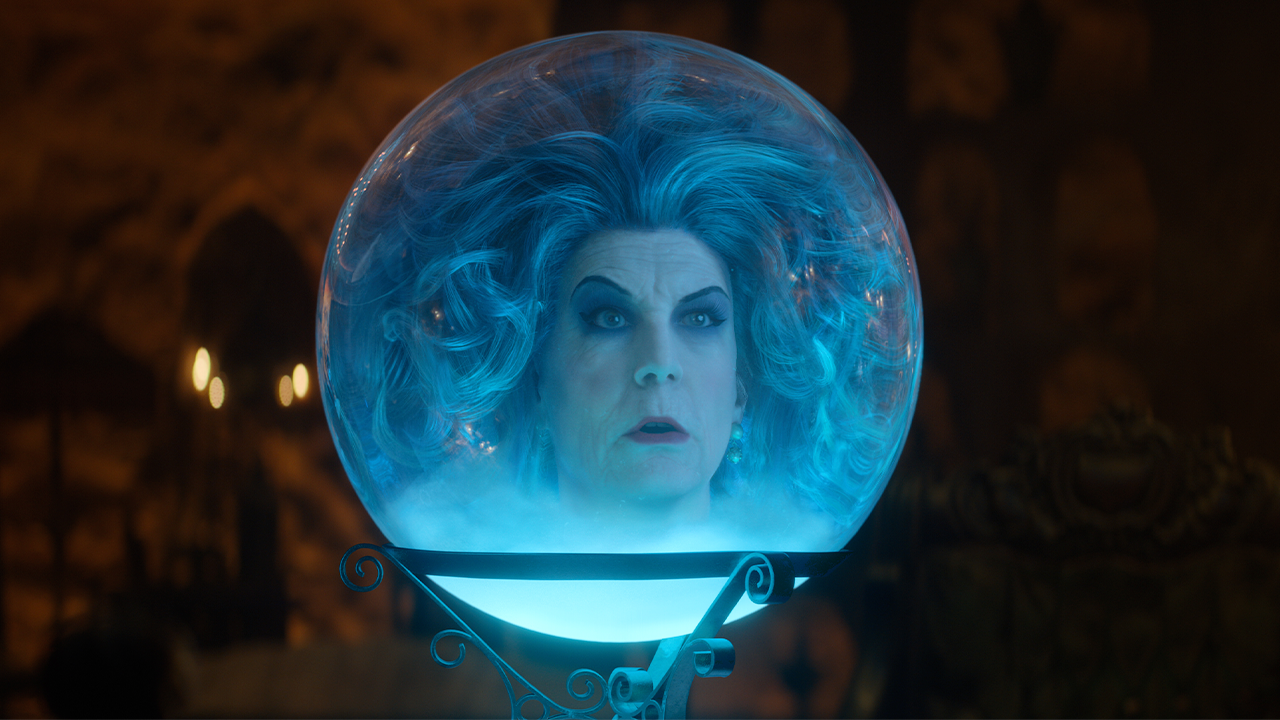Oppenheimer Ending Explained: Breaking Down Christopher Nolan’s Epic Biopic
Let’s make this simple: You want to know if there are any post or mid-credits scenes in Oppenheimer. The answer is there are not. Christopher Nolan’s latest movie has no scenes after the credits start rolling.
Full spoilers for Oppenheimer follow!
Christopher Nolan is known for creating high-concept blockbusters that merge action and science fiction, but his latest film is firmly rooted in real historical events. Oppenheimer dramatizes the life and work of J. Robert Oppenheimer (played by Cillian Murphy), the man widely regarded as the father of the atomic bomb.
With the film now in theaters, it’s time to break down the ending and how Oppenheimer depicts one of the most influential minds of the 20th century.
Oppenheimer’s Ending Explained
Oppenheimer is nothing more or less than the story of one of the most high-stakes cases of project management in world history. The film follows J. Robert Oppenheimer as he oversees the Manhattan Project and the creation of the world’s first atomic bombs, with numerous other real-life scientists (Albert Einstein, Niels Bohr, Edward Teller, Richard Feynman) and military and government officials (Leslie Groves, Harry S. Truman) also depicted in the film.
As anyone with even a passing familiarity with world history knows, the Manhattan Project is ultimately successful. Two bombs are constructed at the secretive Los Alamos facility. The bombs are dropped on the Japanese cities of Hiroshima and Nagasaki in August 1945, bringing a swift end to a war many feared would culminate in a costly, bloody invasion of mainland Japan. Whether that was the best outcome for humanity is a question the film doesn’t even attempt to settle. Dr. Oppenheimer himself clearly had complicated feelings on the subject.
However, that’s not where Oppenheimer ends. The film is equally concerned with its protagonist’s life both before and after the Manhattan Project, and the after is something the film dwells on long after the bombs are handed over to the US military.
Oppenheimer focuses a great deal on two pivotal periods after the war. In 1954, we see Dr. Oppenheimer testifying before a committee tasked with deciding whether or not to renew his security clearance. Without that clearance, Dr. Oppenheimer can no longer serve on the Atomic Energy Commission or influence the government’s nuclear policy. In 1959, we see Robert Downey, Jr’s character Lewis Strauss facing an uphill battle to be confirmed as the Eisenhower administration’s Secretary of Commerce. It quickly becomes clear his past association with Dr. Oppenheimer is a major barrier to his confirmation.
Both of these storylines are notable for their use of color, or rather, their lack of color. The 1954 scenes are presented in a very harsh, washed-out palette, while the 1959 scenes are completely black and white. This was a very deliberate choice on Nolan’s part. Color is meant to draw a distinction between the portions of the movie that are presented from Oppenheimer’s subjective point of view and those that take a more objective, impersonal approach.
Color is meant to draw a distinction between the portions of the movie that are presented from Oppenheimer’s subjective point of view and those that take a more objective, impersonal approach.
“I wrote the script in the first person, which I’d never done before. I don’t know if anyone has ever done that, or if that’s a thing people do or not,” Nolan told Total Film. “The film is objective and subjective. The colour scenes are subjective; the black-and-white scenes are objective. I wrote the colour scenes from the first person. So for an actor reading that, in some ways, I think it’d be quite daunting.”
Only toward the end of the film does it become apparent how the 1954 and 1959 subplots are directly connected. We learn Strauss himself was the one responsible for the creation of the committee reviewing Dr. Oppenheimer’s security clearance. Despite showing every outward sign of being a supporter and friend of Dr. Oppenheimer, Strauss was secretly nursing a grudge against him for years. The film points to two instigating incidents. One is the day when Dr. Oppenheimer supposedly turns Tom Conti’s Albert Einstein against Strauss. The other comes during a meeting of the General Advisory Committee of atomic scientists, where Strauss is humiliated in front of his colleagues.
Strauss achieves his revenge in 1954. Oppenheimer fails to convince the committee to renew his clearance, with testimony from his own friends and colleagues (including Matt Damon’s Leslie Groves and Benny Safdie’s Edward Teller) proving especially damning. Though, certainly, revelations about Dr. Oppenheimer’s extramarital affairs and associations with the Communist Party don’t help.
However, that plot ultimately backfires on Strauss in 1959. Though he seems on track to narrowly be confirmed by the Senate, Strauss is brought down by testimony regarding his personal vendetta against Dr. Oppenheimer. He becomes the first cabinet nominee since 1925 to fail to be confirmed, a black mark on an otherwise distinguished career in the public and private sectors. Even today, Strauss is generally viewed as a villain in American history, whereas Dr. Oppenheimer is revered for his role in the advancement of atomic science and quantum physics.
Oppenheimer ends by revisiting that pivotal interaction between Dr. Oppenheimer and Einstein. We learn that the two weren’t speaking about Strauss at all, but rather Dr. Oppenheimer’s fears regarding the technology he’s loosed upon the world. Though it’s clear by this point that the bomb won’t ignite the planet’s atmospheric hydrogen and destroy all life, as was feared as a remote possibility during the bomb’s development, Dr. Oppenheimer still worries he’s given mankind the power to destroy itself. There’s no way to unmake the bomb.
In that sense, Oppenheimer becomes the thematic opposite of Nolan’s previous film, Tenet.
In that sense, Oppenheimer becomes the thematic opposite of Nolan’s previous film, Tenet. In Tenet, the human civilization of the future plots to save itself from ecological collapse by reversing the flow of time, sparking a temporal war between present and future. In this story, time itself is the doomsday weapon, but unlike in Oppenheimer, there’s a hope that this weapon can be permanently disarmed.
Nolan told The Telegraph that Tenet’s fundamental question “was ‘What if you could un-invent an awful technology? What if the toothpaste could be put back in the tube?’ I suppose every time-travel film is about the fantasy of righting some of the wrongs of the past. But in the real world, it’s a one-way street.”
Does Oppenheimer Have a Post-Credits Scene?
Oppenheimer doesn’t have any scenes after the credits start rolling. This definitely isn’t surprising, given that this is a historical drama rather than an action-packed blockbuster. Not to mention the fact that post-credits scenes have never really been Nolan’s style, even when he directed the Dark Knight trilogy. And with a runtime clocking in at three hours, Oppenheimer already has plenty of room to tell its story.
How Accurate Is Oppenheimer?
Oppenheimer is rare among Nolan’s filmography in that it’s a biopic with roots in historical fact, rather than a high-concept science fiction or superhero story. The film specifically draws upon Kai Bird and Martin J. Sherwin’s 2005 biography American Prometheus: The Triumph and Tragedy of J. Robert Oppenheimer.
Slate’s Fred Kaplan has a detailed breakdown of Oppenheimer’s historical accuracy. The gist is that the film is generally very faithful to real events. In the case of the 1954 and 1959 scenes, much of the dialogue is taken directly from transcripts of the hearings in question. That gets back to Nolan’s comments about the film’s use of color and subjective vs. objective perspective. The 1954 and 1959 scenes are firmly rooted in recorded fact, whereas the rest of the film leaves more room to explore Dr. Oppenheimer’s personal point of view (as Nolan perceives it, anyway).
As Kaplan explains, most of what we see in the film is largely accurate. Even the scene where a young Oppenheimer attempts to poison his physics professor actually happened. The film is also accurate in its portrayal of Strauss as a man with a deep personal grudge against Dr. Oppenheimer, though that grudge was based on more than just the two inciting incidents seen in the film. It seems Dr. Oppenheimer had a long history of antagonizing Strauss, a man infamous for his ability to hold a grudge.
Kaplan writes, “One of Strauss’ colleagues later said, ‘If you disagree with Lewis about anything, he assumes you’re just a fool at first. But if you go on disagreeing with him, he concludes you must be a traitor.’”
The film also takes some liberties with how it depicts Oppenheimer’s state of mind following the end of the war. While the tense scene between Dr. Oppenheimer and Gary Oldman’s President Truman did happen, and the former really did confess to having blood on his hands, Kaplan argues that Oppenheimer’s objections to the atomic bomb were often more about practicalities than outright nuclear anxiety. For example, one of the reasons he opposed the H-bomb was that its massive blast radius made large cities the only practical targets.
Kaplan argues that Oppenheimer’s objections to the atomic bomb were often more about practicalities than outright nuclear anxiety.
Kaplan writes, “He remained unenthusiastic, worrying that the H-bomb would divert money from Hiroshima-type A-bombs, which he thought the Army should continue building as weapons to be used on the battlefield if the Soviets invaded Western Europe. He argued that H-bombs were too powerful for battlefield targets—they could destroy only big cities—and, if the Russians built them, as they would if we did, a war would devastate American cities, too. He did eventually come to the view, as portrayed in the film, that this mutual vulnerability might deter both sides from using the weapons or even from going to war at all. But he was not opposed to nuclear weapons in general.”
Finally, it should be noted that Oppenheimer tends to gloss over the contributions made by the many other men and women involved in the Manhattan Project. The movie may feature a great many famous scientists, but only in a few instances (like with Teller’s H-bomb research) does the film truly delve into their work. Oppenheimer only alludes to one of the other great challenges faced by the Manhattan Project – the desperate need to refine enough uranium and plutonium to make the bombs possible in the first place. Even in a three-hour film, there’s only so much room to tell the story of such a massive undertaking.
For more on Nolan’s latest film, learn how Nolan recreated an atomic bomb and find out why box office analysts are reeling over the Barbenheimer phenomenon. Also might as well check and see if there are any Barbie post-credits scenes while you’re at it!
What Did We Think of Oppenheimer?
In IGN’s review of Oppenheimer, Siddhant Adlakha said, “Oppenheimer is Christopher Nolan’s most abstract yet most exacting work, with themes of guilt writ large through apocalyptic IMAX nightmares that grow both more enormous and more intimate as time ticks on.” He gave it a 10 out of 10.
Meanwhile, over on Rotten Tomatoes, Oppenheimer’s critics score sits at 94% as of July 28, making it one of the best-reviewed movies of 2023 so far. Similarly, the audience score sits at 92%.
What did you think of Nolan’s latest movie, though? Let’s discuss in the comments!
Note: this article was originally published on July 21, 2023 and updated on July 28 with the latest information about Oppenheimer.
Jesse is a mild-mannered staff writer for IGN. Allow him to lend a machete to your intellectual thicket by following @jschedeen on Twitter.










Post Comment